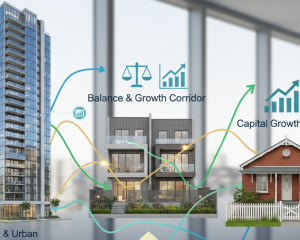What Is the Interest Rate on a Reverse Mortgage
For many senior homeowners, understanding the interest rate on a reverse mortgage can be quite perplexing. As a team dedicated to offering accessible, straightforward information about property-related financial services, we at PropertyChat, aim to demystify the concept of reverse mortgages and the interest rates associated with them. Let’s delve deeper into the topic.
Overview of Reverse Mortgages
A reverse mortgage is a unique type of loan that allows homeowners aged 60 and over to convert a portion of the equity in their homes into funds. Unlike a conventional mortgage where you make regular repayments to reduce your debt, a reverse mortgage accrues interest over time, increasing your loan amount.
Qualifying for a Reverse Mortgage
To qualify for a reverse mortgage in Australia, there are several requirements to be met. First, the applicant needs to be at least 60 years old. Secondly, the borrower must own their home outright, or the existing mortgage should be low enough to be paid off with the reverse mortgage proceeds. The amount one can borrow is typically calculated as a percentage of the home’s value and may also take into account the borrower’s age and the current interest rate.
Types of Reverse Mortgages
There are three types of reverse mortgages available in Australia. Single-purpose reverse mortgages, typically offered by non-profit organisations or local government agencies, are the least expensive option. Home Equity Conversion Mortgages (HECMs) are federally insured loans backed by the U.S. Department of Housing and Urban Development. Lastly, proprietary reverse mortgages are private loans backed by the companies that develop them.
Pros and Cons of Reverse Mortgages
Considering a reverse mortgage? Here are a few advantages and disadvantages to keep in mind.
Pros:
1. Access to funds: Reverse mortgages allow senior homeowners to tap into their home equity without needing to sell their homes.
2. Flexible payment options: Funds can be received as a lump sum, regular income stream, line of credit, or a combination of these.
3. No regular repayments: No monthly repayments are required with a reverse mortgage, the loan is usually paid back when the property is sold.
Cons:
1. Cost: Reverse mortgages usually have higher upfront costs than other loan types.
2. Interest and loan balance: Because you aren’t making regular repayments, the interest compounds over time, and your loan balance will increase.
3. Impact on benefits: A reverse mortgage can affect your eligibility for aged pension or other government benefits.
Calculating Interest Rates on Reverse Mortgages
Interest rates on reverse mortgages can be a bit complex due to their unique structure. These rates can be either fixed or adjustable, with adjustable rates usually offering a choice between an annual adjustable rate and a monthly adjustable rate. These rates are typically higher than conventional mortgages due to the risk factors involved.
For instance, let’s consider an adjustable-rate reverse mortgage loan. Suppose you are a 70-year-old homeowner with a home worth AUD 500,000, and you take out a reverse mortgage. The lender might agree to a loan amount of 30% of the home’s value – AUD 150,000 in this case.
Now let’s assume the lender offers an annual interest rate of 5%. After the first year, your outstanding loan balance would be AUD 150,000 plus 5% of AUD 150,000. That’s AUD 150,000 + AUD 7,500 = AUD 157,500.
In the second year, the interest would then be charged on this new balance, meaning you’d be charged 5% of AUD 157,500. That’s AUD 7,875, which would be added to your loan balance, making it AUD 165,375.
This process repeats year after year, and it’s what we mean when we say that interest on a reverse mortgage is compounded. It can significantly increase the loan balance over time, which is why it’s so important to consider the rate when applying for a reverse mortgage.
Keep in mind that this is a simplified example, and other factors could influence your interest rate and loan balance, such as annual mortgage insurance premiums or lender fees. Also, the reverse mortgage balance doesn’t need to be repaid until you sell the home, move out of it permanently, or pass away.
To make this process easier, consider using a reverse mortgage calculator. It can provide a more accurate estimation of your loan amount and the accumulated interest over time, given the specific parameters of your situation. Remember, these are tools that can assist you in your decision-making process but should not replace professional financial advice.
How to Choose the Best Reverse Mortgage
The best reverse mortgage for you depends on your financial needs, circumstances, and long-term goals. It’s crucial to compare the interest rates, fees, and features of different reverse mortgage products. Using a comparison rate can be a helpful way to assess the total cost of the loan, including interest and fees.
Reverse Mortgage Loan Limits
The amount you can borrow with a reverse mortgage depends on several factors: your age, the value of your home, and current interest rates. As a rule of thumb, the older you are, the more equity you can borrow against your home. In Australia, lenders typically allow borrowers to access between 15% and 45% of their home’s value.
Reverse Mortgage Repayment Options
The loan can be repaid in several ways. The borrower can make payments any time they want, but typically, reverse mortgages are repaid when the borrower sells their home, moves out permanently, or passes away.
Reverse Mortgage Counseling
It is strongly recommended to seek independent advice before taking a reverse mortgage. A financial adviser can help you understand the loan terms and conditions, as well as the potential risks and benefits.
Reverse Mortgage Fraud Prevention
Fraud in the reverse mortgage market is rare, but anyone considering this type of loan should be aware of potential scams. Always verify the credentials of the company and ensure you understand all the terms and conditions before signing.
Frequently Asked Questions
What is a reverse mortgage?
A reverse mortgage is a type of loan that allows homeowners aged 60 and over to borrow money using their home equity as collateral.
What are the eligibility requirements for a reverse mortgage?
The borrower must be at least 60 years old and own their home outright, or have a small enough remaining mortgage balance to be paid off with the reverse mortgage.
How does a reverse mortgage work?
A reverse mortgage allows you to borrow money against your home’s equity. The loan plus interest is repaid when the homeowner sells the home, moves out permanently, or dies.
What are the benefits of a reverse mortgage?
Benefits include accessing funds without needing to sell your home, flexible disbursement options, and no regular mortgage repayments.
What are the drawbacks of a reverse mortgage?
Drawbacks include high upfront costs, increasing loan balance due to accumulating interest, and potential impacts on government benefit eligibility.
Unlock the Mystery of Reverse Mortgages Today!
Confused about reverse mortgage interest rates? Let us shed light on this intricate subject. At PropertyChat, we’re dedicated to providing clear, accessible information about property-related financial services. Our mission is to simplify the concept of reverse mortgages and the associated interest rates, ensuring you make informed decisions.
🏠 Discover Reverse Mortgages with Expert Guidance
Navigate the world of reverse mortgages confidently with insights tailored to your needs. Our comprehensive breakdown will empower you to grasp the ins and outs of this unique financial option.



